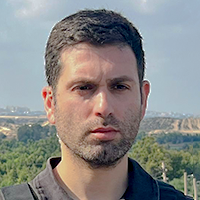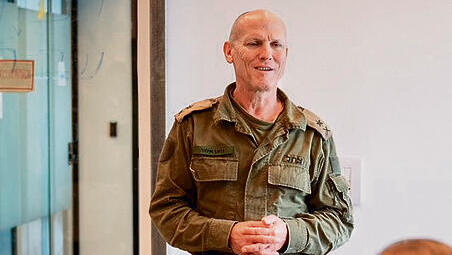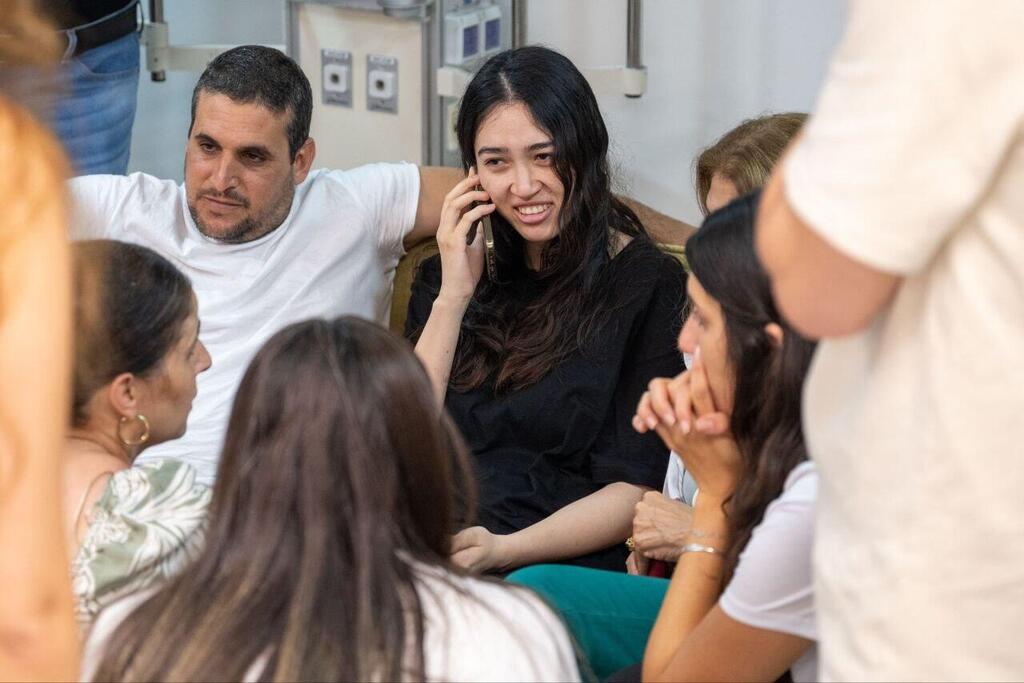Getting your Trinity Audio player ready...
Two short ceremonies were held recently on a secured floor of a high-rise office tower in Tel Aviv. In front of a large poster with photos of the Israeli hostages held in Gaza, head of the IDF's Missing Persons Unit, COL (res.) Y., marked a status change for seven hostages: two were confirmed murdered in Hamas captivity, and five were identified as deceased with their bodies brought for burial in Israel after they were found in the Strip.
There was a mixture of slight excitement and sadness over another small step in the arduous marathon to bring the hostages back to Israel. "May their memory be a blessing," Y. said in the conclusion of his remarks and within minutes, each of his subordinates returned to their tasks.
4 View gallery
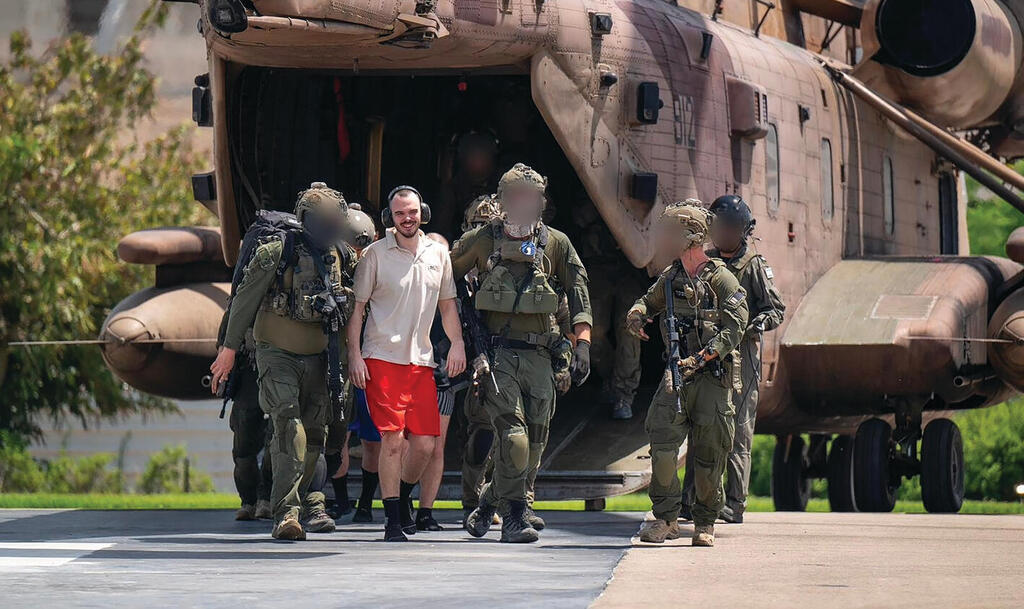

Rescued hostage Andrey Kozlov returning to Israel
(Photo: IDF's Missing Persons Unit)
In the first month of the war, the large poster in the office complex leased by the IDF for the unit headed by MG (res.) Nitzan Alon displayed 255 pictures. In the first week after October 7, no wall could contain the number of missing persons at the war's outset – about 3,000, with whom the unit began its mission.
Currently, 115 pictures of hostages still in Hamas captivity remain at the top of the poster showing the “Gazan side.” The military intelligence that led to the recovery of the five bodies from Khan Younis last week was analyzed here, piece by piece, like a puzzle.
The final piece came from three Hamas terrorists who were recently interrogated. One of them was even brought to the field and pointed to the exact location where the five bodies were hidden.
The unit’s activities highlight the lack of the Shin Bet and Military Intelligence Directorate’s intelligence in Gaza over the last decade, a period of relative peace, with no agents or collaborators and an overreliance on surveillance technologies in the absence of a presence in the Strip.
Thousands of leads were received here monthly, processed and meticulously analyzed by hundreds of analysts, intelligence officers, and decoders who cross-reference information to determine where and how each hostage was being held, alive or dead.
There are also officers specializing in assessing the chances of translating each breakthrough into operational action, such as those led by forces in Jabalia, Nuseirat, and Khan Younis in the past two months.
Representatives from Israel’s intelligence community, including the Mossad and Shin Bet, operate in the Missing Persons Unit, the operational and intelligence heart of the directorate, also responsible for liaising with the hostages’ families. Information provided by Hamas terrorists during interrogation is not considered sufficient and is cross-referenced with other information from sources gathered here.
Hamas terrorists often lie during interrogations, attempting to mislead and confuse, further delaying the task carried out by a directorate established for the first time, a unit the IDF did not previously need to locate and rescue hundreds of Israelis from captivity in the hands of a murderous terrorist army.
The happiest moments although rare are when hostages are rescued alive. The investigators’ eyes are flooded daily with thousands of distressing images and videos found and still being collected from the Gaza Strip, from the scenes of atrocities and killings.
Some of these depict babies and children, youth and soldiers, whom the terrorists attempted to harm. Yet, the perspective must be long-term, cold, and professional, to analyze the findings and provide answers to the many questions.
Accordingly, personnel turnover is high. The unit includes 18- and 19-year-olds who have just completed special training courses in the IDF Intelligence Corps, alongside experienced reservist officers in their 40s and 50s, and even those aged 70 and above, who gained experience in past hostage-taking cases. At its peak, the unit included about 1,000 members.
Now there are about 500 people, and every time someone comes in to replace a member of the team who has left, they hope this would be the last time filling this position would be needed. "In fact, this is the only place in the IDF where its members pray for it to be closed already," the military said.
"Serving here isn’t easy mentally, but the human turnover has an advantage – fresh minds, a different perspective, varying directions, original ideas not previously heard from new people joining,” they added.
The unit has many reservists who serve for months while managing their personal lives arriving every evening and delving into the IDF’s most sensitive mission, racing against time. Sometimes, Y. catches them staying after midnight, immersed in thousands of secret documents and printed pictures, and tells them, "Enough, go home, we'll continue tomorrow."
4 View gallery
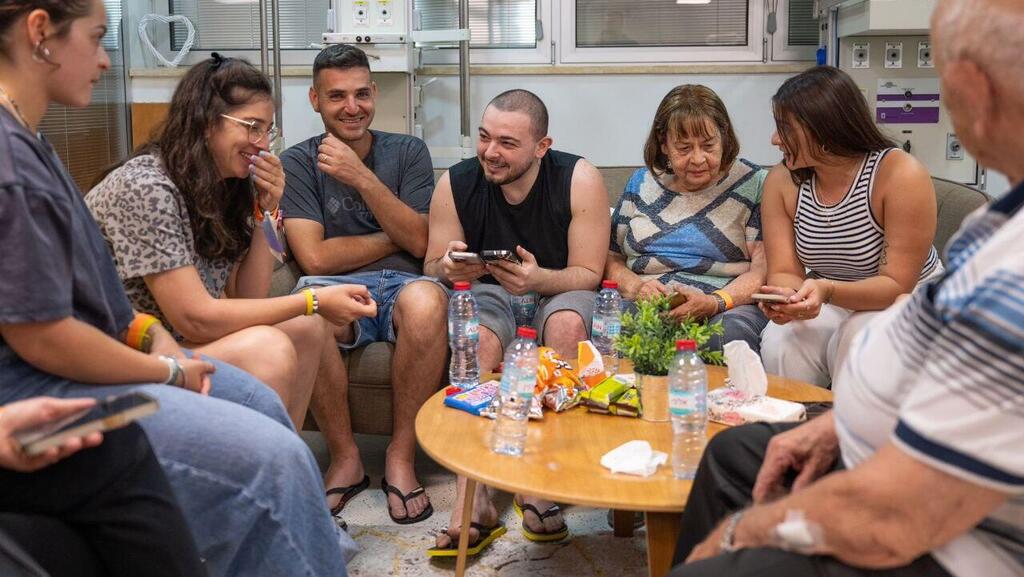

Rescued hostage Almog Meir Jan reunited with friends and family
(Photo: IDF Spokesperson's Unit)
Some unit members are also intentionally defined as "red teams," meaning those who propose alternatives and reasoned opposition as to why the ideas and breakthroughs achieved by the regular teams might not necessarily be correct. Other roles here were "invented" out of necessity due to the IDF's and Israel's lack of experience with such a massive hostage event.
Most people in the unit didn’t know each other beforehand and suddenly found themselves side by side in psychological processing workshops to cope with the mission. "Alongside our desire and hope that the unit will close soon, we’re also preparing for the scenario where it will operate for years,” the IDF said.
“Our dream is to have a ceremony here announcing the unit is shutting down. Everyone here does this out of enormous moral commitment and ethical motivation because they understand they’re part of a historical event on a national scale.”



